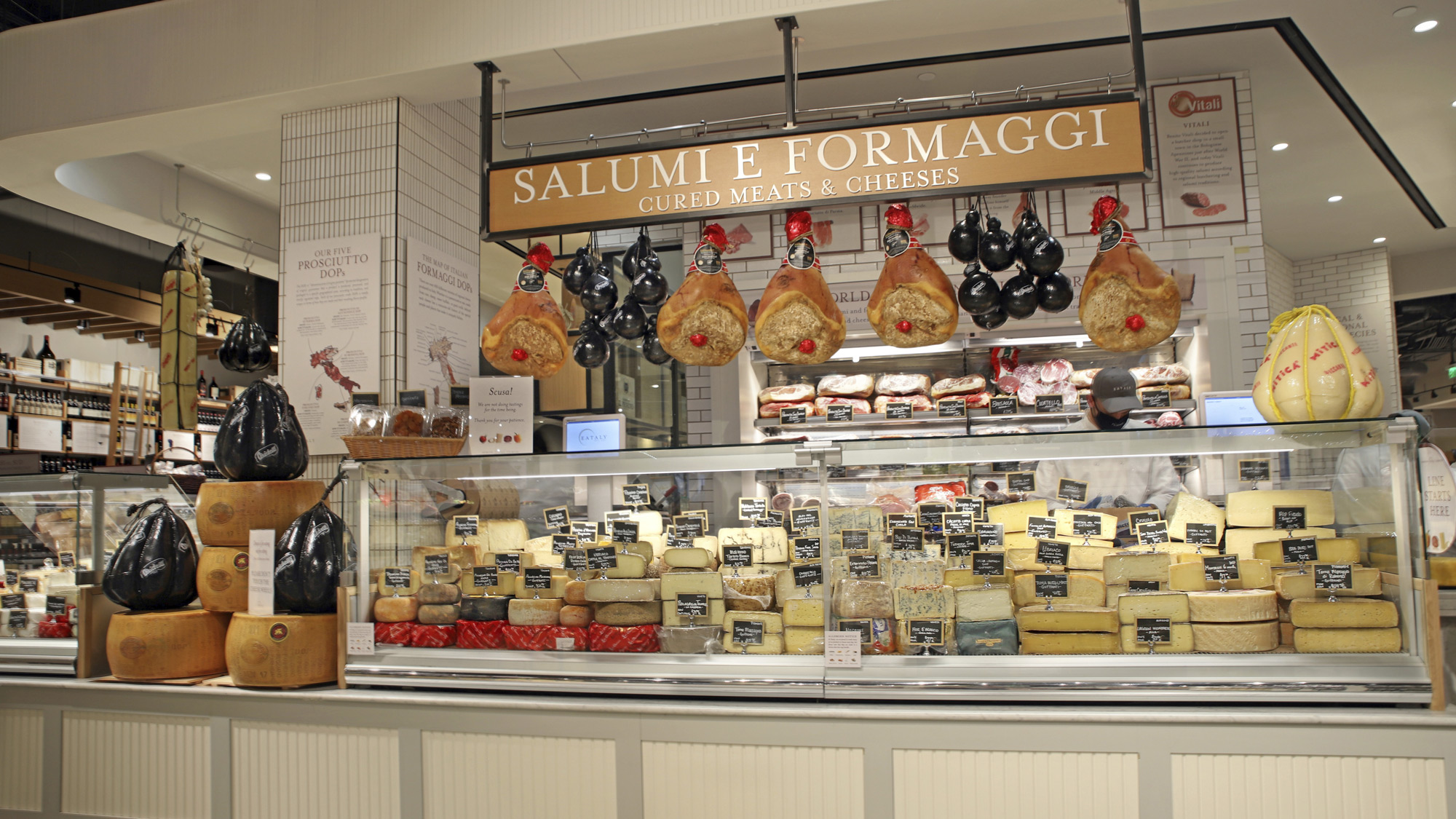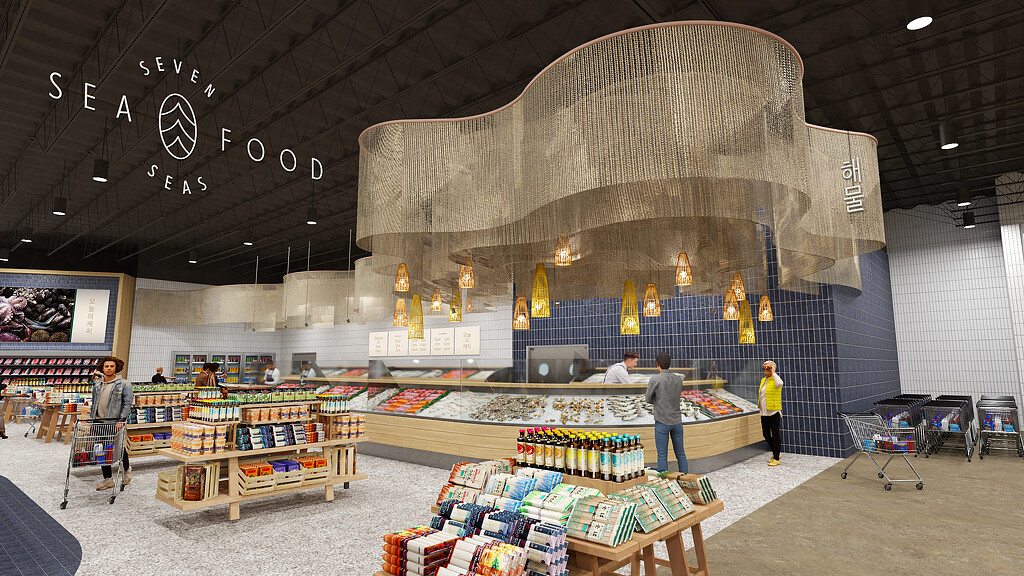5 Design Considerations for Authentic Specialty Market Experiences
January 21, 2025 | By Justin DeAbreu and Anna Han
Though the retail and dining sector has struggled in the face of pandemic recovery and rising costs, the specialty markets subcategory is both thriving and positioned for continued success. According to a 2023 report by the Specialty Food Association, and as reported by the Institute of Food Technologists, specialty foods sales are projected to see a compound annual growth rate of 5.4%, dating back to the time of the report into 2027.
We’re seeing this growth manifest across the U.S., with stores like H Mart, a Korean grocer worth $2 billion with 96 stores across the country, purchasing an entire San Francisco shopping center this year. Patel Brothers, an Indian grocery company started in Chicago, now has 52 locations in 20 states. Mega Mart, a Korean bi-coastal grocer, launching a high-end concept called Jagalchi in the Bay Area is also indicative of this flourishing subcategory.
The appeal of these markets is in the essence they offer and their ability to capture the unique joy of stepping into another culture. Thoughtful design is essential to preserving this authenticity and catering to shoppers of all backgrounds. To create a thriving retail presence that inspires and delights, five design elements are key to the specialty market experience.
1. Lay out an immersive and accessible cultural experience
Making the cuisine accessible to everyone is an important principle for the design of specialty markets. Carefully consider how to combine familiar sections like produce and pantry with cultural immersion to balance the needs of a shopper who wants to get in and out in a hurry with one who is exploring the full experience.
Spaces that mimic the feel of local marketplaces in different regions (e.g., an open-air market from the Middle East or an Italian piazza) are great sources of inspiration. To highlight what sets your market apart, create zones for discovery and wandering that introduce customers to new, lesser-known products. Consider including event spaces dedicated for cultural events like cooking demonstrations or product showcases that further immerse customers in the experience.

2. Set the mood
When used intentionally, lighting, color, texture, and décor evoke a sense of place, transporting customers to the culture represented. Authenticity can be reinforced by stimulating multiple senses, from music that sets the cultural tone to subtle yet distinct scents. Local art and iconography that resonate with the country or region of origin can round out the overall experience, such as Mexican Talavera pottery design or Japanese minimalist aesthetics.
3. Curate for delight and newness
Creating designated sections for seasonal or unique products is an effective addition to promote discovery and draw repeat customers. Dedicating space to offer samples and tastings can make for a great educational opportunity to better understand products they may not have found otherwise. Grouping items by theme (e.g., a “Korean BBQ Night” or “Mediterranean Feast”) can simplify decision-making and encourage visitors to experiment and become familiar with lesser-known items.
4. Bridge cultures through storytelling
Storytelling signage can connect unfamiliar products to individual lifestyles. Educating customers about product origins, cooking techniques, recipes, and/or health benefits also creates a more personal experience and can increase sales. Using bilingual or multilingual text can reinforce trust and authenticity, and prioritizing imagery over text can create a more inclusive experience for individuals of all cultures.

5. Factor packaging design into the process
It’s important to consider what customers take away from their experience. Packaging provides an opportunity to extend the brand beyond the store — giving customers something to take home and share with their friends and family. Consider unique packaging methods as well as traditional symbols, patterns, and colors that add another layer of authenticity.

Creating joyful discovery through thoughtful design
Retail environments need to offer a multidimensional experience, and the right design choices have the power to offer more than just a trip to the grocery store. As specialty internationally focused markets gain popularity, carefully integrating these design principles can help them maintain cultural integrity while creating a space for learning and exploring.
For media inquiries, email .


